
| Home | Deepsky Atlas | TheAstronews | Links | Solar System | ||||||

Hawaiian Astronomical SocietyConstellations: Vela -- Sails of Argo Navis |
||||||||||
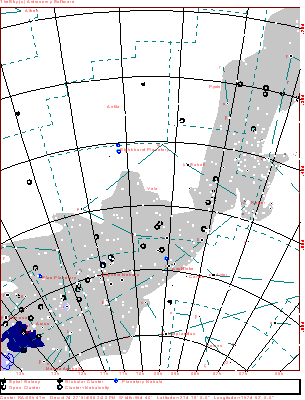
Click the map for a 916x1200 version of the above. Click here for a map better suited for use in the field.
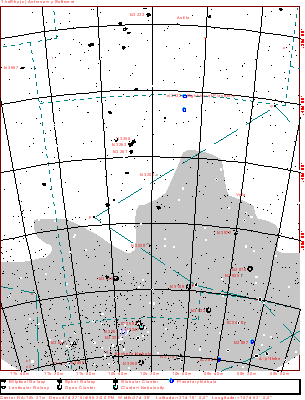
This a more detailed view of the constellation. The map displays stars to magnitude 10, and deepsky objects to magnitude 12. Click here for a map better suited for use in the field.
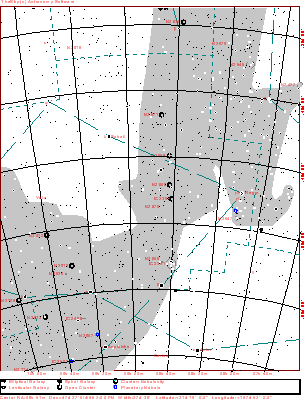
Click here for a map better suited for use in the field.
 79k JPEG NGC2547 is a mag. 4.7 open cluster located 2° south of Regor (Gamma Velorum). Described as bright, large (20'), and little condensed, it contains about 80 stars of mag. 7-16 in a nice, powdery field. The nebulosity is the reflection type, and not visible visually. Image from the Digital Sky Survey. 79k JPEG NGC2547 is a mag. 4.7 open cluster located 2° south of Regor (Gamma Velorum). Described as bright, large (20'), and little condensed, it contains about 80 stars of mag. 7-16 in a nice, powdery field. The nebulosity is the reflection type, and not visible visually. Image from the Digital Sky Survey.
|
 92k JPEG Caldwell 85 (IC2391) is the large open cluster to the right (west) side of the two image mosaic from the Digital Sky Survey. Dreyer calls it very large (50') and bright (mag. 2.5), consisting of 30 stars, 10 of them bright (about mag. 4 or brighter). The brightest is Omicron Velorum. It sits 1.8° NNW of Delta Velorum. NGC2669 sits on the left side of the image, one degree from IC2391. It consists of about 40 stars, the brightest shining at mag. 7.6, spread over 12'. 92k JPEG Caldwell 85 (IC2391) is the large open cluster to the right (west) side of the two image mosaic from the Digital Sky Survey. Dreyer calls it very large (50') and bright (mag. 2.5), consisting of 30 stars, 10 of them bright (about mag. 4 or brighter). The brightest is Omicron Velorum. It sits 1.8° NNW of Delta Velorum. NGC2669 sits on the left side of the image, one degree from IC2391. It consists of about 40 stars, the brightest shining at mag. 7.6, spread over 12'.
|
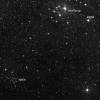 62k JPEG IC2395 and NGC2670 are two open clusters that occupy the same low power field (they are separated by 56'). IC2395, located 5.3° east of Regor (Gamma Velorum), is reported variously as having an overall magnitude from 4.6-6, and with individual brightest stars ranging from mag. 5.5 to mag. 9. Estimated numbers of stars range from 16 to 40. There appears to be some confusion between the actual, fainter cluster, and a brighter grouping of stars 15' to the east. 62k JPEG IC2395 and NGC2670 are two open clusters that occupy the same low power field (they are separated by 56'). IC2395, located 5.3° east of Regor (Gamma Velorum), is reported variously as having an overall magnitude from 4.6-6, and with individual brightest stars ranging from mag. 5.5 to mag. 9. Estimated numbers of stars range from 16 to 40. There appears to be some confusion between the actual, fainter cluster, and a brighter grouping of stars 15' to the east.
NGC2670 is a mag. 7.8 open cluster that resembles a globular. The description is: Fairly large (9'), sparse (about 20 stars), little condensed, with stars mag. 13 and fainter. An orange star lies 2.7' to the south. Image from the Digital Sky Survey.
|
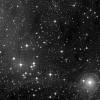 54k JPEG Two clusters occupy this one degree area of northern Vela 4° WNW of Suhail, Lambda Velorum. NGC2671 (Bennett 40a, mag. 12, 4') is the more northerly cluster found at the top of the image), described as fairly rich in stars, little compressed toward the middle, and containing about 40 stars of magnitude 12 to 13. 54k JPEG Two clusters occupy this one degree area of northern Vela 4° WNW of Suhail, Lambda Velorum. NGC2671 (Bennett 40a, mag. 12, 4') is the more northerly cluster found at the top of the image), described as fairly rich in stars, little compressed toward the middle, and containing about 40 stars of magnitude 12 to 13.
Trumpler 10 extends over an area as large as 30', with a combined magnitude of 4.6. It contains about 40 stars, mag. 6.4 and fainter. The combination of the fine textured NGC2671 and the coarse Trumpler 10 is quite striking in scopes as small as 6".
|
|
 62k JPEG NGC2792 is a mag. 13.5 planetary nebula located 1.3° north-east of Suhail (Lambda Velorum). This smallish (10"), evenly illuminated object should be easily visible in a 6" from a dark sight. The central star is a more challenging mag. 15.7. Another of Dreyer's remarkable objects, it sits in a nice field of scattered stars. Image from the Digital Sky Survey. 62k JPEG NGC2792 is a mag. 13.5 planetary nebula located 1.3° north-east of Suhail (Lambda Velorum). This smallish (10"), evenly illuminated object should be easily visible in a 6" from a dark sight. The central star is a more challenging mag. 15.7. Another of Dreyer's remarkable objects, it sits in a nice field of scattered stars. Image from the Digital Sky Survey.
|
 82k JPEG NGC2972 (Bennett 41a) is a mag. 9.9 open cluster located in central Vela, about 5° north-west of Phi Velorum. Dreyer calls it small (4'), not rich in stars, and compressed toward the west. It contains about 25 stars of magnitude 11.5 and fainter. Image from the Digital Sky Survey. 82k JPEG NGC2972 (Bennett 41a) is a mag. 9.9 open cluster located in central Vela, about 5° north-west of Phi Velorum. Dreyer calls it small (4'), not rich in stars, and compressed toward the west. It contains about 25 stars of magnitude 11.5 and fainter. Image from the Digital Sky Survey.
|
  21k JPEG NGC3132 (Bennett 43, Caldwell 74)is called the Eight-Burst Planetary. Located 6.8° east of Psi Velorum, Dreyer calls it a very remarkable object. It is very bright (mag. 8), very large, for a planetary nebula (84"x53"), slightly elongated, with a mag. 9 central star. The first image is from a gallery of images by C.Y. Zhang of the University of Calgary. The second is from the Digital Sky Survey. 21k JPEG NGC3132 (Bennett 43, Caldwell 74)is called the Eight-Burst Planetary. Located 6.8° east of Psi Velorum, Dreyer calls it a very remarkable object. It is very bright (mag. 8), very large, for a planetary nebula (84"x53"), slightly elongated, with a mag. 9 central star. The first image is from a gallery of images by C.Y. Zhang of the University of Calgary. The second is from the Digital Sky Survey.
|
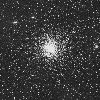 98k JPEG NGC3201 (Bennett 44, Caldwell 79) is a mag. 6.8 globular cluster located 5.7° north-west of Mu Velorum. Dreyer calls it very large (18'), roundish, and loose. It consists of mag. 13-16 stars. A good object for a 6" and larger telescope under dark skies. Image from the Digital Sky Survey. 98k JPEG NGC3201 (Bennett 44, Caldwell 79) is a mag. 6.8 globular cluster located 5.7° north-west of Mu Velorum. Dreyer calls it very large (18'), roundish, and loose. It consists of mag. 13-16 stars. A good object for a 6" and larger telescope under dark skies. Image from the Digital Sky Survey.
|
If you have any questions about the Hawaiian Astronomical Society
please
(link requires javascript).